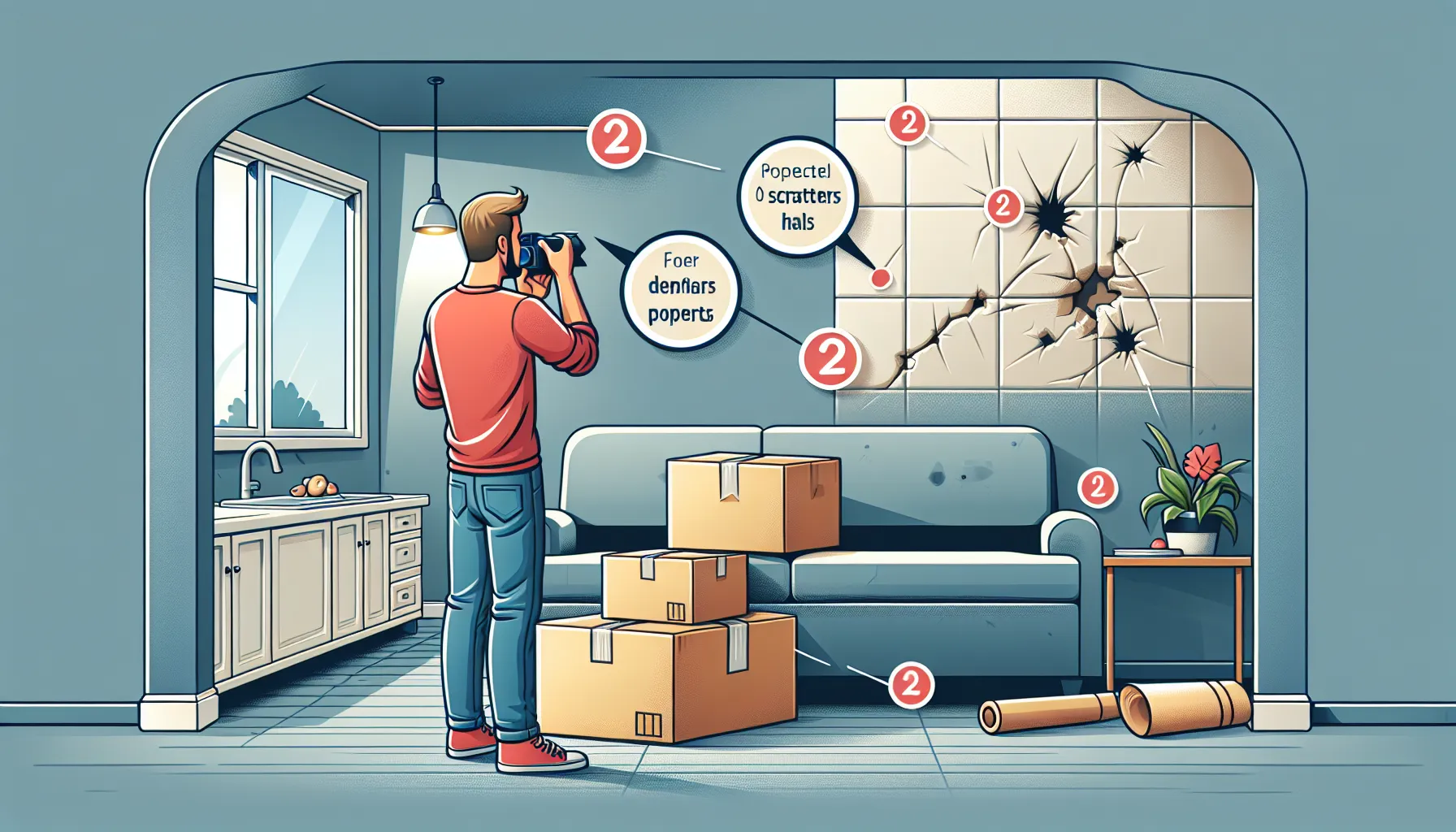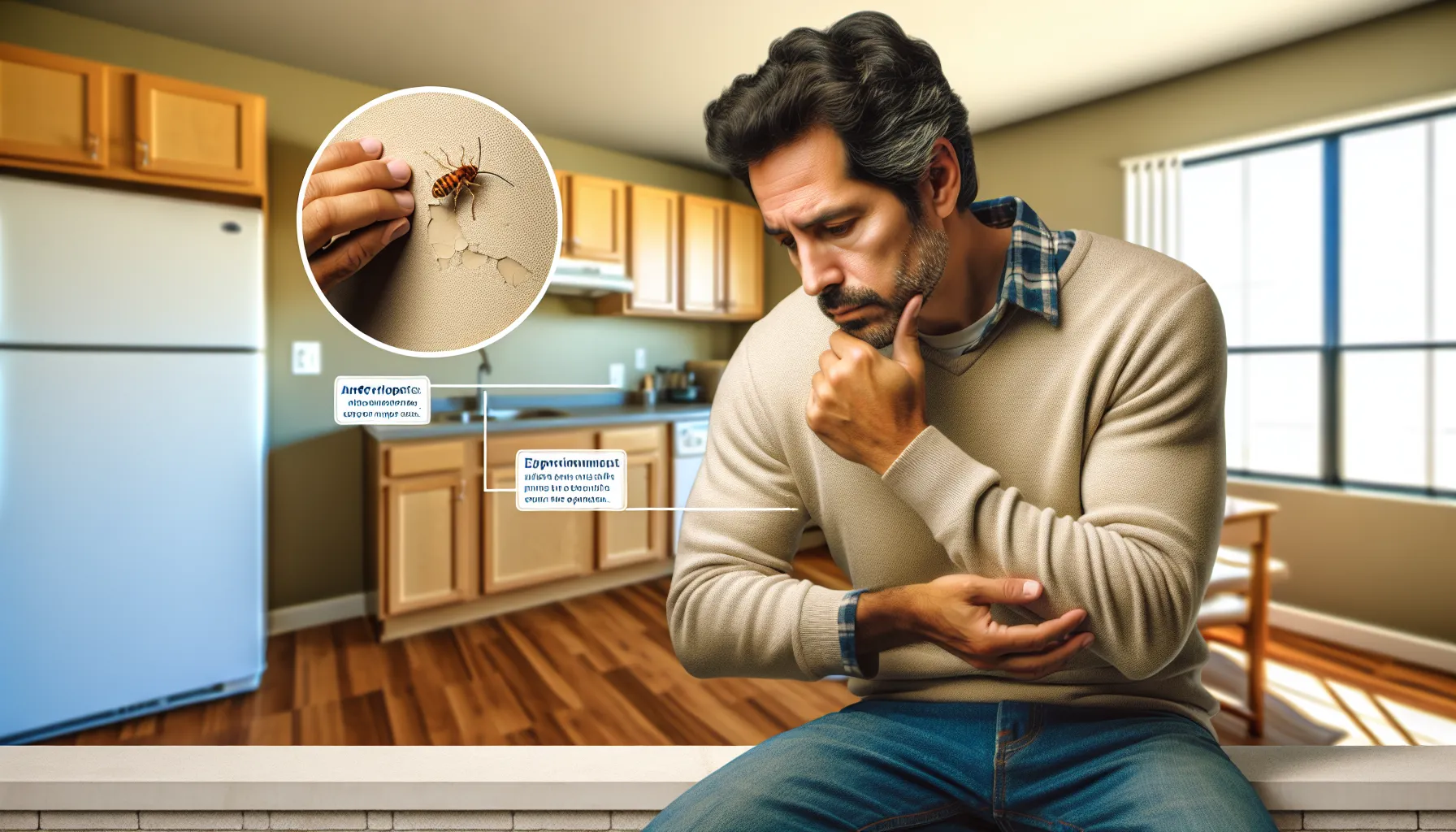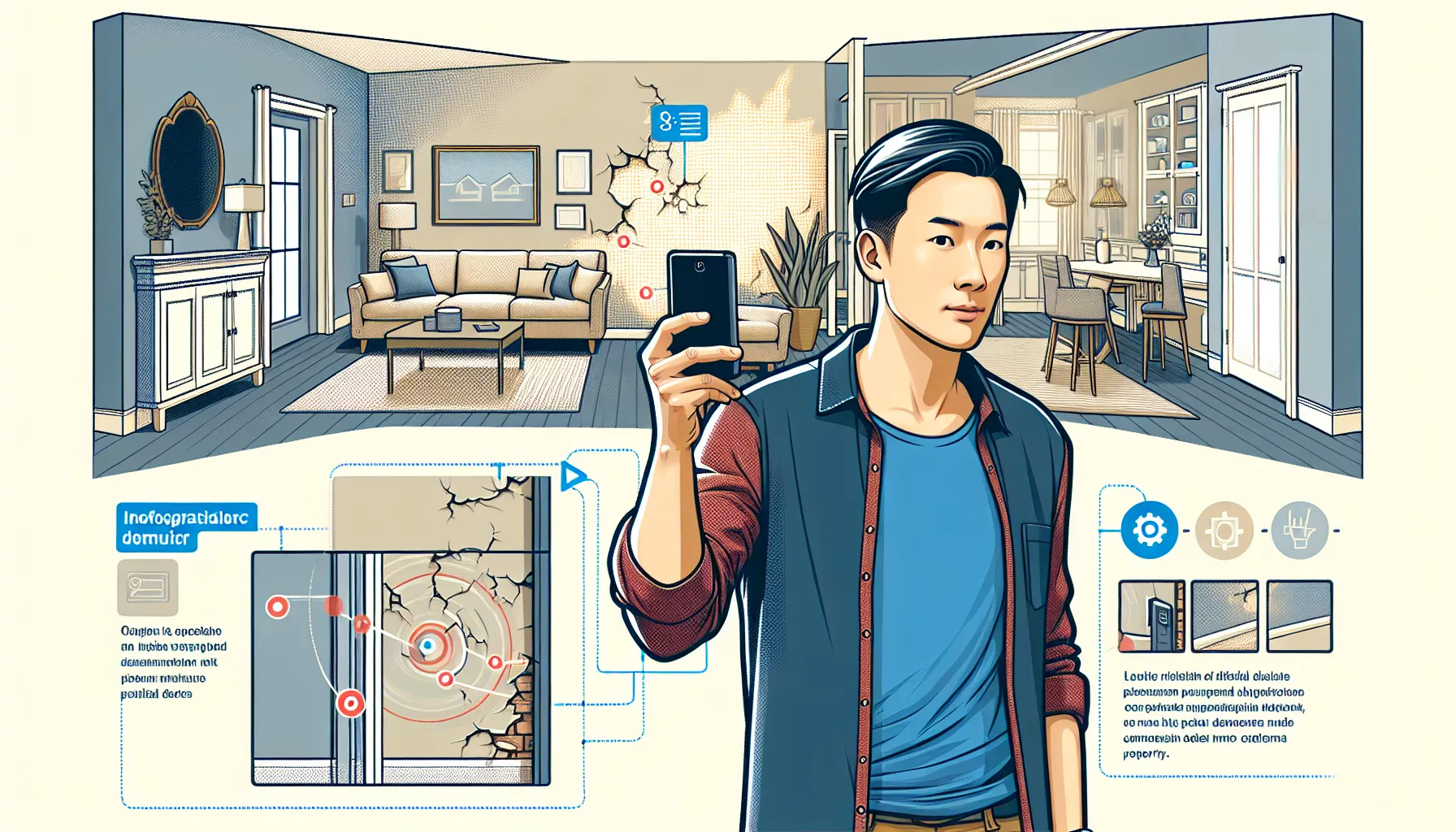Key Takeaways
- Clear and accurate move-out damage reporting in San Ramon protects both tenants and landlords, helping to avoid disputes over security deposits.
- Differentiating between normal wear and tear and true damage is essential—minor scuffs are usually not penalized, while things like broken fixtures or deep stains may result in deductions.
- Photo documentation, move-in and move-out checklists, and open communication are key tools for ensuring fair and transparent reporting.
- Using digital tools such as inspection apps and cloud storage streamlines the reporting process and safeguards documentation.
- Openly discussing inspection results and keeping thorough records helps both parties resolve issues quickly and fosters positive rental experiences.
Moving out of a rental in San Ramon can be stressful, especially when it comes to reporting damages. I know how important it is to feel confident about what gets documented and how it affects your security deposit. Many renters worry about being held responsible for issues they didn’t cause or missing something that could cause disputes later.
Have you ever wondered what really counts as damage versus normal wear and tear? You’re not alone. Clear move-out damage reporting helps protect both tenants and landlords, setting expectations and reducing misunderstandings. By understanding the process, you can leave your rental on good terms and avoid last-minute surprises. What steps can you take to make sure everything’s fair and transparent? Let’s explore what you need to know before handing over the keys.
Understanding Move-Out Damage Reporting in San Ramon
Move-out damage reporting in San Ramon involves careful documentation of the rental’s condition once tenancy ends. I inspect the property with attention to details like carpet stains, chipped paint, or appliance issues. By reviewing a move-in checklist and comparing it to the current condition, I clarify which items reflect normal use and which require repairs.
Have you ever wondered how small scuffs or faded spots get classified? In San Ramon, property managers distinguish normal wear—such as minor marks—from actual damage like broken locks, holes in walls, or cracked tiles. If there’s uncertainty, asking for explanations or photos adds transparency.
A complete damage report protects both parties. I provide clear records to answer any future questions about the condition of the unit. This way, disputes about deductions from the security deposit become rare. Is there something specific about your unit’s condition you’re concerned about before moving out?
Communication remains important. I reach out with copies of the inspection results, so you know what’s noted and why. Consistent, open updates allow for any questions to be answered right away. By staying informed, you can confidently navigate the move-out process and set clear expectations for yourself and for the property owner.
The Importance of Accurate Damage Reporting

Clear damage reporting supports a smooth move-out for everyone involved. Documenting the property’s condition protects your interests and helps avoid misunderstandings—have you wondered how a few careful steps could save your deposit?
Protecting Your Security Deposit
Accurate damage reporting makes a big difference for your security deposit. I’ve found that taking photos and writing down all existing issues at move-out leaves little room for debate. Many renters lose part of their deposit simply because a stain or mark wasn’t recorded. Wouldn’t you want clear evidence if questions about a scratch or chipped tile ever come up? Listing every detail helps stop unfair deductions. This approach lets property owners distinguish wear from actual damage and gives you proof if any claims arise.
Avoiding Legal Disputes
Precise records can keep legal disputes from escalating. I know most people want the end of a lease to be easy and stress-free. When both tenants and landlords have copies of the same inspection report, there’s less confusion about who’s responsible for repairs. Have disagreements ever made you anxious about potential court involvement? Establishing facts up front with photos and written reports supports your side if any issues reach legal review. Clear documentation often prevents hearings or long negotiations, letting both sides move on quickly.
Common Move-Out Damages in San Ramon Rentals

Move-out day often brings questions about what property managers might count as damage. If you’re preparing to leave a San Ramon rental, you might wonder which issues could impact your security deposit and how to tell the difference between genuine damage and normal wear.
Typical Wear and Tear vs. Real Damage
Understanding how professionals differentiate wear and tear from actual property damage can help you feel more confident about your move-out inspection. Wear and tear happens with daily living, and most leases account for it. For example, you might see faded carpet, minor scuffs on walls, or loose door handles. Small nail holes from hanging pictures and slight discoloration on fixtures after several years usually fall into this category.
Damage, on the other hand, means harm that goes beyond everyday use. Think broken windows, deep carpet stains, or large holes in the wall. Missing appliances, burns on countertops, and pet scratches on doors also count as examples. These are the types of problems managers document in their reports and are more likely to result in deductions from security deposits.
Have you noticed more serious issues as you pack? Taking note of everything from cracked tiles to broken blinds can help avoid surprises. What sorts of concerns do you see most often in your own rental? If you’re unsure, comparing the condition of these items to your original move-in checklist helps clarify what counts as new damage.
By paying attention to the specific details in your space—whether it’s marks on the flooring or damage to fixtures—you help make move-out reporting clear and fair for everyone. Would reviewing your property’s checklist or move-in photos put your mind at ease as you prepare for inspection day?
Step-by-Step Guide to Move-Out Damage Reporting in San Ramon

Approaching move-out day can bring up many questions, especially about reporting damages and protecting your security deposit. Want to achieve a smooth transition and feel confident you did your part? Let’s break down each part of move-out damage reporting in San Ramon.
Documenting the Property Condition
I begin by going through each room, paying attention to details like walls, floors, appliances, and fixtures. Taking clear photos or videos of every space helps me capture evidence of the rental’s condition. I focus on areas that commonly show use—carpets, countertops, and bathroom tiles, for example. I keep my original move-in checklist on hand so I can compare what’s changed and what has stayed the same. Notice a stain, chip, or mark that’s new? I make a note of it and add it to my photo log. Could I see someone questioning this later? If so, I list it separately and describe it in simple terms. Have you found damage that you can’t explain? I write it down anyway—better to share than leave it out.
Communicating with Landlords or Property Managers
After finishing my documentation, I reach out to the landlord or property manager to schedule a walk-through. Sharing my records in advance makes conversations easier and more open. I use simple language and ask clear questions about anything I’m unsure about. Is something not matching your memory or understanding of the lease? I point it out during the inspection and ask for clarification. Open lines of communication help everyone stay on the same page. Have I received a copy of the move-out inspection report? I always request it so I can double-check that my records match those of the property manager. If there are differences, I talk them over calmly and provide my documentation as support.
Do you have details you want to share or questions about specific issues in your rental? Open communication and clear records make your move-out experience much smoother—what would help you feel at ease during this process?
Tools and Resources for Effective Damage Reporting

Accurate damage reporting creates clarity for both renters and property owners during a move-out in San Ramon. Finding the right tools makes this process smoother and reduces the chance of disputes. Have you ever wondered which resources make documenting damage simple and reliable?
Recommended Apps and Templates
Photo documentation apps: I use apps like ZInspector and RentCheck to capture date-stamped photos and videos of each room and surface. These tools help me provide digital proof of the property’s condition, making it easier to address questions about damages.
Move-out checklists: Standardized templates, such as detailed move-out forms and room-by-room checklists, guide my inspection process. They remind me to check appliances, floors, windows and walls for issues like stains or cracked tiles. For example, adding notes to each section helps if I spot carpet discoloration in the living room or chipped paint in a bedroom.
Cloud storage solutions: Digital storage options like Google Drive allow me to organize and share inspection files, photos and reports with property managers or landlords. Having everything stored in one place saves time and keeps the process transparent.
Inspection report generators: Online forms let me create summary documents quickly. I can pull together my photos, written notes, and checklist results to produce a professional report that’s easy to send and reference if questions arise.
Collecting, using and sharing these resources help me prepare for move-out inspections without stress. Which of these tools do you find most useful when preparing for your move?
Tips for Tenants and Landlords in San Ramon

Open communication helps avoid surprise issues with move-out damage reporting in San Ramon. Have you asked questions about your responsibilities or shared documentation early? Doing so provides clarity for all parties.
Photograph every room before leaving. A series of clear images—such as kitchen floors, bathroom fixtures, and bedroom walls—offers proof if a disagreement arises about who caused a specific problem.
Review your move-in checklist. Comparing these records to the current condition lets both tenants and landlords spot what’s changed over time. Does anything look different from when you moved in? Mark these differences on paper to avoid confusion later.
Set expectations about normal wear. Faded paint or minor scuffs tend to fall under standard use, while missing fixtures or broken appliances indicate actual damage. Distinguishing between the two helps focus on what truly matters.
Walk through the property with the other party present, if possible. Discuss findings openly and make notes in writing. Do you both agree on what’s wear versus actual damage? Quick agreement here lowers stress at deposit return time.
Keep copies of everything—photos, inspection checklists, and written notes. Storing these files in a secure online folder simplifies access in case questions arise weeks or months later.
Treat the process as a conversation, not a confrontation. What steps could you both take to make this easier next time? Reflecting on the experience makes future move-outs smoother and more transparent for all involved.
Conclusion
When it’s time to move out in San Ramon I always remind myself that clear documentation and open communication can make all the difference. By staying proactive and organized I can protect my interests and help ensure a fair outcome for everyone involved.
Approaching the process with transparency and respect goes a long way. With the right tools and a thoughtful attitude I’m confident I can handle any move-out inspection smoothly and avoid unnecessary stress.
Frequently Asked Questions
What is the difference between normal wear and tear and damage in a rental?
Normal wear and tear refers to minor issues from everyday use, such as faded carpets or small scuffs on walls. Damage, however, means problems like broken windows, large holes, or deep stains—issues above ordinary usage that may affect the return of your security deposit.
How can I document the condition of my rental before moving out?
Take clear, date-stamped photos or videos of every room, including problem areas. Note any changes from your move-in checklist. Save copies of all documentation and share them with your landlord or property manager for transparency.
Why is accurate damage reporting important for renters?
Accurate damage reporting protects your security deposit and helps avoid unfair charges. Clear documentation provides evidence of the property’s condition, helps distinguish between damage and wear, and reduces the risk of disputes with your landlord.
What tools can I use to document my rental’s condition?
You can use apps like ZInspector or RentCheck to take date-stamped photos and videos. Move-out checklists, cloud storage like Google Drive, and digital report generators also help organize and share your inspection records securely.
How can I avoid disputes over security deposit deductions?
Communicate openly with your landlord and provide detailed documentation of the property’s condition. Compare your move-in and move-out checklists, and conduct a walk-through together to address concerns before returning your keys.
Should I do a walk-through inspection with my landlord before moving out?
Yes, a joint walk-through with your landlord helps ensure you both agree on the property’s condition. It provides an opportunity to clarify any issues and reduces misunderstandings about possible deductions from your security deposit.
What are typical move-out damages landlords charge for?
Landlords may charge for damages like broken appliances, holes in walls, deep carpet stains, or missing fixtures. Minor cosmetic issues, like small nail holes or light scuffs, usually fall under normal wear and tear and shouldn’t result in charges.
How soon should I report move-out damages to my landlord?
Report damages as soon as possible, preferably before your final inspection or move-out date. Early communication helps clarify expectations and offers time to address any issues before they impact your security deposit.
Can documenting the property help if there’s a legal dispute?
Yes, having detailed records, photos, and inspection reports can support your case if there is a disagreement with your landlord. Reliable documentation shows the property’s condition and protects your rights as a tenant.
